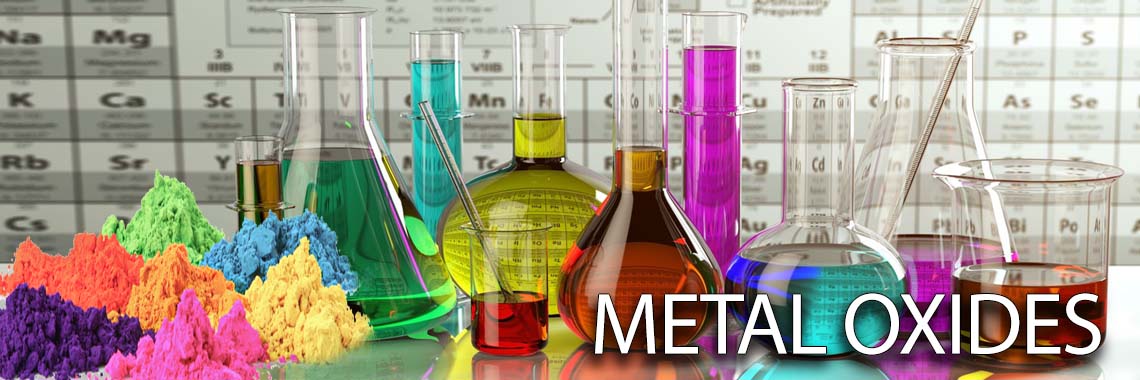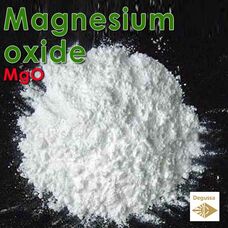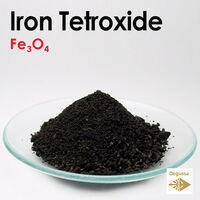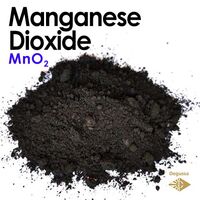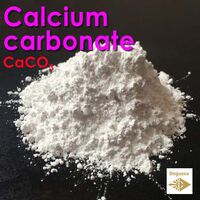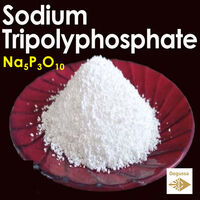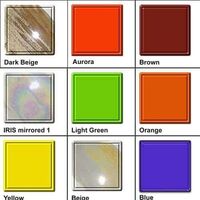Magnesium oxide - Magnesium(II) oxide - chemical compound. Is MgO solid
MgO
Magnesium oxide (MgO), or magnesia, is a white hygroscopic solid mineral that occurs naturally as periclase and is a source of magnesium (see also oxide). It has an empirical formula of MgO and consists of a lattice of Mg2+ ions and O2− ions held together by ionic bonding. Magnesium hydroxide forms in the presence of water (MgO + H2O → Mg(OH)2), but it can be reversed by heating it to remove moisture.
Magnesium oxide was historically known as magnesia alba (literally, the white mineral from Magnesia), to differentiate it from magnesia negra, a black mineral containing what is now known as manganese.
Heating elements
MgO is prized as a refractory material, i.e. a solid that is physically and chemically stable at high temperatures. It has two useful attributes: high thermal conductivity and low electrical conductivity. Filling the spiral Calrod range top heating elements on kitchen electric stoves is a major use.
Fireproofing
It is a principal fireproofing ingredient in construction materials. As a construction material, magnesium oxide wallboards have several attractive characteristics: fire resistance, termite resistance, moisture resistance, mold and mildew resistance, and strength.
Niche uses
MgO is one of the components in Portland cement in dry process plants. Magnesium oxide is used extensively in the soil and groundwater remediation, wastewater treatment, drinking water treatment, air emissions treatment, and waste treatment industries for its acid buffering capacity and related effectiveness in stabilizing dissolved heavy metal species.
Medical
Magnesium oxide is used for relief of heartburn and dyspepsia, as an antacid, magnesium supplement, and as a short-term laxative. It is also used to improve symptoms of indigestion. Side effects of magnesium oxide may include nausea and cramping. In quantities sufficient to obtain a laxative effect, side effects of long-term use include enteroliths resulting in bowel obstruction.
More about Magnesium oxide in Wikipedia
Formula: MgO
Molar mass: 40.304 g/mol
Form: White powder, odorless
CAS Number: 1309-48-4
Density: 3.6 g/cm³
Synonyms: oxomagnesium, Magnesia, Periclase, Seawater magnesia, Magnesium oxide fume, Uro-Mag, Magnesia grooves, Causmag, Granmag, Maglite, Seasorb, Animag, Magcal, Marmag, Oxymag, BayMag, Liquimag, Maglite, Anscor, Hamag, Magox, Kyowamag, Elastomag, Kyowaad, Luvatol
Magnesium oxide - Magnesium(II) oxide - chemical compound
- Brand: Degussa
- Product Code: Oxide - Magnesium Oxide - MgO
- SKU: MgO
- Availability: 567
-
0.99€
Available Options
Related Products
IRON TETROXIDE - Iron (II,III) Oxide Ferric Minium Ceramic Pigments and Stains
Fe3O4 Iron(II,III) oxide is the chemical compound with formula Fe3O4. It occurs in nature as the mineral magnetite...
0.59€
Manganese Dioxide - Advantages of using in Pottery
MnO2 Manganese dioxide (MnO2) is an inorganic compound. It is a black to brown-colored material that occurs n..
0.99€
Calcium carbonate - CaCO3
CaCO3 Calcium carbonate (CaCO3) is a chemical compound composed of calcium, carbon, and oxygen. It is one of the mo..
0.59€
Sodium tripolyphosphate - The Advantages in the Manufacture of Ceramics
Na5P3O10 Sodium triphosphate (STP), also sodium tripolyphosphate (STPP), or tripolyphosphate (TPP)) is an inorganic..
0.59€
Tags: oxides

